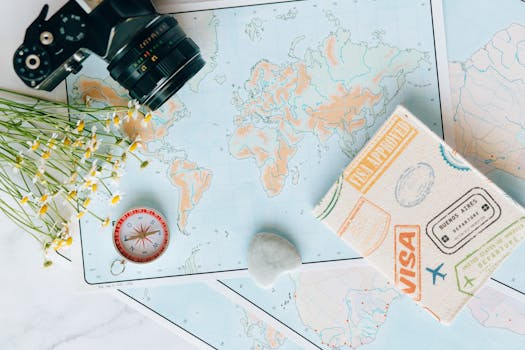- 1. Introduction to Cultural Ambassador Programs
- 1.1. What is a cultural ambassador program?
- 1.2. The benefits of cultural ambassador programs
- 1.3. Examples of cultural ambassador programs
- 2. How Cultural Ambassador Programs Work
- 2.1. Selection process for cultural ambassadors
- 2.2. Training and preparation for cultural ambassadors
- 2.3. Responsibilities of cultural ambassadors
- 2.4. Interaction with local communities
- 2.5. Impact of cultural ambassador programs
- 3. Successful Cultural Ambassador Programs
1. Introduction to Cultural Ambassador Programs
The purpose of cultural ambassador programs is to increase international and intergroup dialogue and understanding. Participants in these exchanges can learn about different cultures, share their own, and represent their home country or community. Participants in cultural ambassador programs get a richer appreciation for the diversity in our world and the skills to communicate effectively with people from a variety of cultural backgrounds. Exchange programs, language immersion, cultural festivals, and other such events are just a few examples. When properly implemented, cultural ambassador programs can help bring people together and build a more peaceful, interconnected world.
1.1. What is a cultural ambassador program?
A cultural ambassador program is one that encourages people to learn about and appreciate other cultures. In most cases, this entails sending people to another country so that they can teach locals about their way of life. These initiatives aim to promote intercultural awareness, sensitivity, and acceptance. There is a wide range of possibilities for cultural ambassador programs, from quick visits to permanent relocations. Language classes, cultural excursions, and volunteer work are common components of such programs.
1.2. The benefits of cultural ambassador programs
Global understanding and positive intercultural interactions can be advanced through cultural ambassador programs. In most cases, participants of these programs are sent abroad for an allotted amount of time to live and work. Guests serve as cultural ambassadors by introducing their host communities to their home countries’ traditions, customs, and ways of life. In doing so, students get an appreciation for the customs and traditions of the place they are visiting. Cultural ambassador programs have the potential to promote peace and understanding on a worldwide scale by establishing personal ties and cultivating mutual respect.
1.3. Examples of cultural ambassador programs
The Fulbright Program, the Peace Corps, and the International Visitor Leadership Program are all examples of cultural ambassador programs that facilitate the exchange of ideas and information between the United States and other countries through the participation of students, scholars, and professionals; the promotion of economic and social development through volunteer service; and the introduction of new leaders from other countries to the United States. Participants in these programs get the chance to connect with people from all over the world and deepen their awareness of other cultures.
2. How Cultural Ambassador Programs Work
To achieve these goals, cultural ambassador programs send people to other nations to both teach and learn about local customs. These individuals represent their country by participating in events such as workshops, cultural performances, and language exchanges. The purpose of these initiatives is to increase international understanding and cooperation. Cultural ambassador programs are often offered to young adults who are curious about different cultures and willing to learn and share their own. these programs may be funded by the government or by non-profit groups. Participants in such programs not only make friends for life but also advance their communication, leadership, and cultural understanding.
2.1. Selection process for cultural ambassadors
Cultural ambassadors are chosen in a variety of ways, depending on the program and the organization. There may be a series of steps involved in applying to a school, including an interview, and sometimes a written essay and/or letters of recommendation. Language ability, cultural awareness, and demonstrated leadership ability are just a few of the many requirements for admission to a wide variety of programs. Before submitting an application, applicants should make sure they meet all of the program’s requirements by doing extensive research on the organization’s website. Select individuals serving as cultural ambassadors may be required to complete additional training and orientation prior to beginning their tours of duty.
2.2. Training and preparation for cultural ambassadors
Cultural ambassador programs necessitate intensive training and planning on the part of participants. It is essential that cultural ambassadors have the tools they need to represent their country and culture overseas in a way that promotes mutual understanding and respect. Language and communication skills, cultural understanding and sensitivity, dispute resolution, and diplomatic etiquette are all possible areas of focus for education. Foreign embassies sometimes provide their envoys with lessons on both the cultures they will be visiting and their own. Travelers may need to make practical preparations, such as booking flights and hotels, as well as more in-depth cultural preparations, such as reading up on local customs and traditions. Cultural ambassadors are better able to foster meaningful cultural interchange and advance international understanding as a result of extensive training and preparation.
2.3. Responsibilities of cultural ambassadors
The goal of cultural ambassador programs is to increase mutual understanding and cooperation between nations. Typically, participants in these programs are sent abroad to represent their nation or culture, where they participate in community outreach and cultural exchange initiatives. Cultural ambassadors are individuals whose job it is to represent their country abroad through aspects of their culture such as music, art, dance, food, and language. They may also host cultural workshops for local students or speak at public events to raise awareness of cultural differences and foster mutual respect.
2.4. Interaction with local communities
The goal of cultural ambassador programs is to increase cross-cultural understanding and dialogue around the world. Community engagement is a major component of many of these programs’ strategies for reaching their target audience. Cultural ambassadors are expected to make connections with local communities through events, activities, and conversations related to the culture(s) they represent. Through these interactions, kids are able to better comprehend the local culture and customs while also providing their own unique insights. As the globe becomes more interconnected, it is crucial that people from different backgrounds learn to communicate and understand one another.
2.5. Impact of cultural ambassador programs
The goal of cultural ambassador programs is to increase cross-cultural communication and understanding. Programs like these include citizens of one country traveling to another to spread the values and customs of their homeland. The impact of these programs is substantial since they encourage mutual respect and tolerance by decreasing cultural tensions.
Successful cultural ambassador programs identify and recruit people who are proud of their heritage and like teaching others about it. These people are selected and groomed to be excellent ambassadors for their country. They get to meet individuals from many walks of life, take part in cultural activities, and exchange stories with one another.
Cultural ambassador programs have many positive outcomes. They contribute to the spread of knowledge about other cultures, the encouragement of mutual appreciation and tolerance, and the promotion of international peace and harmony. People benefit in several ways from the knowledge and experience gained by participation in such programs.
All things considered, cultural ambassador programs are a great approach to facilitate cross-cultural communication and understanding. They contribute to the reduction of prejudice and discrimination amongst people of different backgrounds and encourage an atmosphere of mutual respect and tolerance.
3. Successful Cultural Ambassador Programs
Global awareness and positive intercultural connections can only be furthered through well-executed cultural ambassador programs. Participants in these exchange programs get to see the world, meet people of other cultures, and teach them about their own. Individuals who take part in cultural ambassador programs develop skills like cross-cultural communication and leadership that can benefit them in their personal and professional lives. Furthermore, cultural ambassador programs can aid in diminishing prejudice and increasing appreciation for one another’s traditions. In sum, cultural ambassador programs have a wide range of positive effects that make them an effective strategy for fostering international harmony.
3.1. The Fulbright Program
The Fulbright Program is widely recognized as a leading international exchange initiative. Since its inception in 1946, this initiative has worked to broaden Americans’ horizons and expose them to different cultures. Grants are available for both U.S. and international students, faculty, and professionals to pursue educational and research opportunities in other countries. Participants in the Fulbright Program are expected to represent both their home country and the United States in a positive light. The program’s nearly 400,000 alums have made a substantial contribution to international friendship and collaboration.
3.2. The Peace Corps
The Peace Corps is widely recognized as an outstanding international cultural exchange initiative. Founded by President John F. Kennedy in 1961, the Peace Corps’ mission is to foster international understanding and goodwill via the placement of American volunteers in developing nations. Volunteers contribute to many different sectors, including the academic, medical, agricultural, and civic spheres. They stay with host families and learn the language and customs of the nation they are visiting. Volunteering with the Peace Corps gives Americans the chance to serve their country while also learning about other cultures.
3.3. The British Council’s Cultural Skills Program
The goal of the British Council’s Cultural Skills program is to train people to be effective cultural ambassadors in their communities. Skills in areas like communication, leadership, and intercultural awareness are emphasized throughout the curriculum. By participating in this course, students can improve their intercultural competence and their capacity for cross-cultural communication and teamwork. When done right, cultural ambassador programs like the one run by the British Council may achieve great things for international relations and mutual understanding.
3.4. The Japan Exchange and Teaching Program
The Japan Exchange and Teaching (JET) Program has been very successful in its mission to increase international understanding and foster closer links between Japan and other nations through the exchange of young, educated Japanese people from those countries. The JET Program began in 1987 and has since welcomed young professionals from all over the world to Japan to work as English teachers or international relations coordinators. Participants can study Japanese in depth, interact with native speakers, and broaden their own cultural horizons by teaching and learning from others. The success of the JET Program in fostering international understanding and friendship has prompted the creation of analogous initiatives in other nations.
3.5. The Cultural Vistas Fellowship
American college students can get overseas experience and hone their leadership abilities through the Cultural Vistas Fellowship, which is a prestigious cultural ambassador program. The goal of this program is to encourage cultural interchange and assist students become better representatives of their country abroad. Students can broaden their perspectives on the world and their place in it by participating in the Cultural Vistas Fellowship. Participating in the program will equip you with the language skills, cultural experiences, and networking opportunities necessary to advance your career in today’s international economy.
Conclusion
In conclusion, cultural ambassador programs are extremely important for increasing worldwide comprehension and developing substantial intercultural connections. These efforts aid in fostering understanding and cooperation amongst communities by introducing people to new ideas and customs. Cultural exchange and communication are becoming increasingly crucial as our global community grows closer together, and cultural ambassador programs are a great way to facilitate this.





